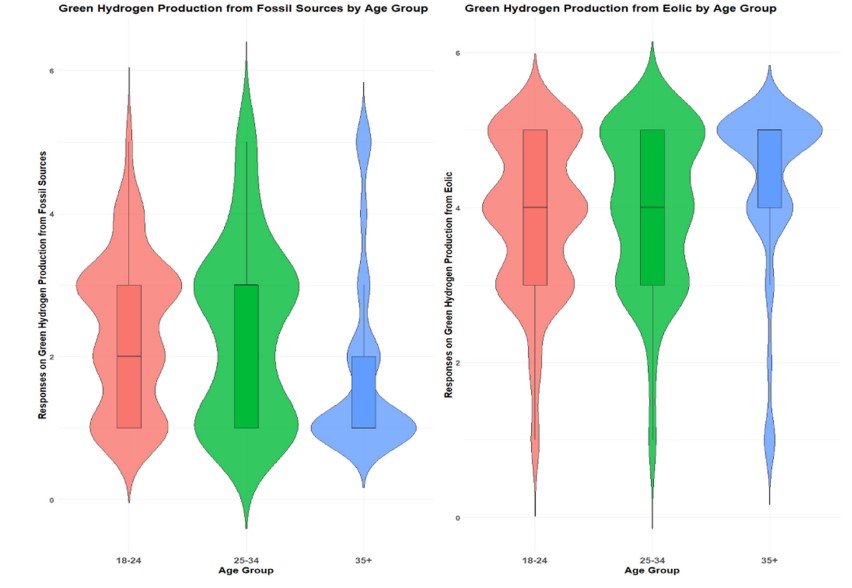
A socio-economic perspective on green hydrogen as a sustainable operations strategy

Hydrogen production from green and fossil sources distinguished by age and gender.
GA, UNITED STATES, December 18, 2024 /EINPresswire.com/ -- This study examines the socio-economic feasibility of green hydrogen as a sustainable energy solution in Europe, focusing on production costs, public awareness, and acceptance. It highlights the potential of green hydrogen to support energy transitions while addressing challenges related to knowledge gaps and societal resistance, emphasizing the need for effective spatial energy planning and public engagement strategies.
Hydrogen serves as an energy carrier with the potential to enable sustainable and flexible energy systems. However, achieving true decarbonization requires the use of renewable energy sources and responsible water management.
In a study (doi: https://doi.org/10.1016/j.susoc.2024.11.002) published in the KeAi journal Sustainable Operations and Computers, a team of researchers conducted a socio-economic analysis of hydrogen production from an integrated wind and electrolysis plant in southern Italy.
The study estimated a Levelized Cost of Hydrogen (LCOH) of €3.60/kg for a 30 MW wind and 18.5 MW electrolysis plant, capable of producing 1,776,000 kg of hydrogen in its first year. Sensitivity analyses indicated that LCOH could range from €2.81 to €4.48/kg, influenced significantly by inflation and capacity factors. For instance, a capacity reduction from 35% to 25% would increase the LCOH to €5.25/kg.
An online public survey revealed that 72.5% of Italians are unaware of the differences between green and grey hydrogen, with knowledge peaking among men over 35. Willingness to pay (WTP) for green hydrogen stood at approximately 10%, with the highest acceptance found among women aged 18-24. Public acceptance of wind power installations reflected a WTP of 8.7%. The study further highlighted that 68.6% of LCOH values cluster between 3.20 and 4.00 €/kg at a 35% capacity factor, emphasizing the need for public education and engagement to enhance acceptance.
While green hydrogen demonstrates substantial economic potential, addressing public knowledge gaps and societal resistance is crucial for large-scale adoption. The study calls for strategic spatial energy planning to facilitate successful implementation.
DOI
10.1016/j.susoc.2024.11.002
Original Source URL
https://doi.org/10.1016/j.susoc.2024.11.002
Funding information
This study was carried out within the PEACE (Protecting the Environment: Advances in Circular Economy) which received funding from the “Fondo per il Programma Nazionale di Ricerca e Progetti di Rilevante Interesse Nazionale (PRIN)” Investimento M4.C2.1.1-D.D. 104.02-02-2022, 2022ZFBMA4 funded by the European Union - Next Generation EU. This manuscript reflects only the authors’ views and opinions, and can be considered responsible for them.
Lucy Wang
BioDesign Research
email us here
Distribution channels: Energy Industry, Science
Legal Disclaimer:
EIN Presswire provides this news content "as is" without warranty of any kind. We do not accept any responsibility or liability for the accuracy, content, images, videos, licenses, completeness, legality, or reliability of the information contained in this article. If you have any complaints or copyright issues related to this article, kindly contact the author above.
Submit your press release